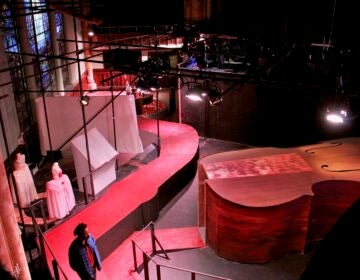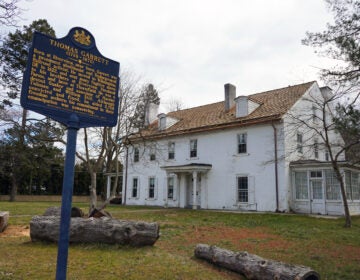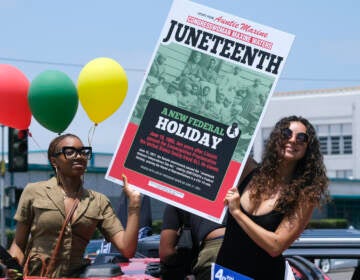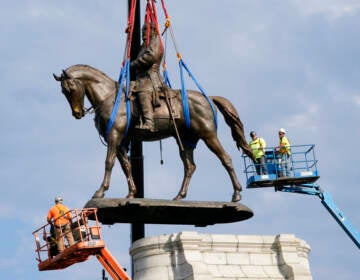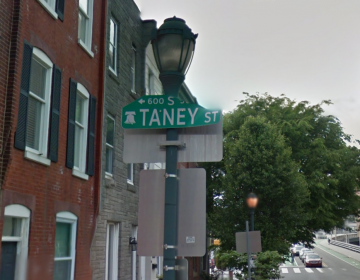‘This is sacred ground’: Archaeologists find likely burial ground for enslaved people at Dover plantation
The search for the gravesite at John Dickinson Plantation in Delaware started after documents were found describing an area where as many as 400 enslaved people were buried.
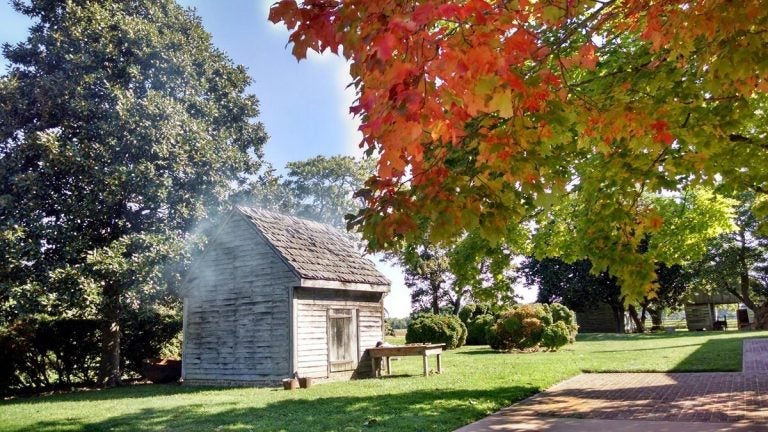
Archaeologists discovered as many as 25 graves that likely belong to people enslaved at John Dickinson Plantation in Dover, Del. earlier this month. (courtesy Div. of Historical and Cultural Affairs)
After two years of scouring the 450 acres of John Dickinson Plantation in Dover, archaeologists say they believe they’ve found the burial ground for people who were enslaved there.
“This is sacred ground for Delaware, and we will continue to treat it with the honor and respect it deserves,” said Tim Slavin, director of the state Division of Historical and Cultural Affairs. “Our path forward is to protect the site, engage with the community about how to proceed, and continue to learn more through research and dialogue.”
The search for the gravesite started after documents were found describing an area where as many as 400 enslaved people were buried. The task of finding that site was difficult because there were no gravestones or other markers to honor those who were buried there.
“This begins a process for us of restoring dignity to their lives and their memory and reconnecting their lives to the stories [of Delaware,]” said Slavin.
After examining overhead maps of the property from the 1930s, investigators identified a plot of ground that looked like it could be a burial site. Further excavation at that location identified as many as 25 grave shafts below the surface. While crews did some digging, they did not disturb the graves themselves.
Two different documents, one from the 1930s and another from the late 1940s, suggest the remains of as many as 400 people are buried in unmarked graves somewhere on the property.
“That’s part of what we have to learn about this site,” Slavin said of those reports.
The division will now work with partners in the community before moving forward on the next steps, he said.
“The people who were buried here need to be represented as well. We need to engage with that descendant community so that we all agree on what to do going forward,” he said.
John Dickinson worked alongside contemporaries like Thomas Jefferson and Benjamin Franklin in crafting and eventually signing the U.S. Constitution. He was the fifth president of Pennsylvania.
Dickinson is also known for a series of essays widely read in the colonies leading up to the American Revolution called “Letters from a Farmer in Pennsylvania,” leading to his nickname as the “Penman of the Revolution.”
But even though Dickinson frequently wrote about the virtues of freedom and liberty, he enslaved numerous people at his massive farm that covered more than 5,000 acres of what is now Delaware’s capital city.
“He is pulled in one direction with the political and legal realities of what slavery was doing to human beings and the moral realities of that,” Slavin said. “But at the same time, he had huge economic interests in the area.”
The new finding is in line with the state’s new approach to telling Dickinson’s story. Last month, the division received a $5,000 grant from the National Trust for Historic Preservation to create an area of reflection at the site. Visitors will be encouraged to use the reflection spot to contemplate what they’ve learned about the African Americans who lived and died as enslaved people on the plantation. It’s part of the museum’s effort to create a dialogue about the uncomfortable truths and painful narratives associated with the history of the site and America’s founding.
The division is also trying to track down the name and identity of every person held in slavery at the plantation.
The state also took a new tactic as part of its celebration of Delaware Day last year. Typically, December 7 marks the day Delaware became the First State by ratifying the U.S. Constitution before any others. The day is usually celebrated by the retelling of stories about the state’s founding fathers, including Dickinson.
This year, that changed. Instead, the Division of Historical and Cultural Affairs focused on the stories of people like Dinah, a mother enslaved by Dickinson who later became an indentured servant.
Amid the racial justice protests prompted by the police killing of George Floyd last summer, the division reaffirmed its commitment to an inclusive telling of Delaware’s history.
“We support the elimination of racial injustice, racism, discrimination, and exclusionary history. We believe that Black lives matter,” the statement read.

Get daily updates from WHYY News!
WHYY is your source for fact-based, in-depth journalism and information. As a nonprofit organization, we rely on financial support from readers like you. Please give today.



